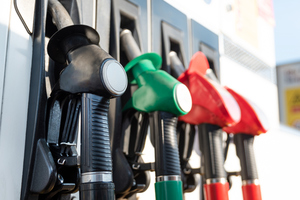CMA publishes emerging analysis from Road Fuel Market Study
Emerging analysis of the scale of rising fuel prices and the underlying causes has today been published by the CMA.

- Most volatile year for fuel prices on record
- Changes in retail pricing require further investigation
- Volatility in refining margins driven by global factors
This analysis comes as part of an initial update on the Road Fuel Market Study from the Competition and Markets Authority (CMA), which was launched in July. The study follows on from an urgent review that had been commissioned by the government to look, in particular, at whether the cut in fuel duty, announced in March 2022, had been passed on to consumers.
Unlike the urgent review in July, a Market Study allows the CMA to use compulsory information-gathering powers to probe the entire market. Since launching the study, the CMA has secured information, including company level financial data, from retailers, refiners and wholesalers. The CMA has also conducted in-depth analysis of fuel prices over the last 5 years, rather than just the 1 year covered by the urgent review.
Today, the CMA is publishing some emerging analysis from that study. It shows:
- 2022 is the most volatile year for fuel prices since reliable records began. Prices rose by around 50p a litre from January to July, the largest leap in fuel prices ever recorded in one year, before falling by 31p for petrol and 14p for diesel since.
- The gap between diesel and petrol prices has become larger than ever reliably recorded. Diesel now costs 24p more per litre than petrol. This is largely due to Western Europe’s reliance on imports of diesel, but not petrol, from Russia.
- Prices vary widely between local areas. We looked into what may be causing high prices in certain areas and found that prices are likely to be higher at petrol stations where there are few (or no) competitors nearby – and particularly where there is no local supermarket petrol station. We will investigate this further.
- Annual retailer fuel margins are increasing, but the causes are not yet clear. Between 2017 and 2021, the difference between the price retailers paid for fuel and the pump price (the “fuel margin”) rose by the equivalent of 2-3p a litre on diesel and 3-4p a litre on petrol. This could be accounted for by other cost rises for retailers or weaker competition on fuel. We will investigate further.
- Our analysis found no evidence of so-called “rocket and feather” pricing in the years before 2022. However, we saw some evidence of rocket and feather behaviour emerging this year, particularly for diesel. This could be driven by the extreme volatility of prices and supply in 2022. We will investigate further.
- Refining margins have risen and continue to be very volatile. This leads to higher prices at the pump, but we see no evidence that this is down to competition problems in the UK. Refining margins are largely dictated by global supply and demand. Over the medium term, UK refiners have not earned profits at levels that would give us cause for concern.
Interim Chief Executive, Sarah Cardell said:
“It has been a terrible year for drivers, with filling up a vehicle now a moment of dread for many. The disruption of imports from Russia means that diesel drivers, in particular, are paying a substantial premium because of the invasion of Ukraine. A weaker pound is contributing to higher prices across the board too.
“There are no easy answers to this. The question for the CMA is whether a lack of effective competition within the UK is making things worse. Although it is only a small proportion of the overall price, the increase in margins for many fuel retailers over the last few years is something we need to investigate further. The key thing we need to establish next is whether this development is down to competition problems or not.”
The CMA is now inviting views and comments on the emerging evidence published today. A further update, including options for possible next steps, will be published in the Spring.
For further information, please visit the Road Fuel Market Study page.
Notes to editors:
- For media enquiries, contact the CMA press office on 020 3738 6460 or press@cma.gov.uk.
- The CMA’s initial update report details the authority’s emerging analysis and comes ahead of the CMA’s Interim Report. The CMA has not seen evidence of competition problems in the UK refining sector. However, it is still examining whether there are competition problems in other areas of the road fuels sector.
- The CMA is legally required to decide whether or not to make a market investigation reference (MIR) within 6 months of launching a market study. At this stage, the CMA does not believe that an MIR is the appropriate course of action for addressing the potential concerns in the market.
- The CMA therefore published a decision today not to make a market investigation reference at this point in time. The decision not to make a reference at this point should not in any way be interpreted as the CMA finding no concerns in the sector, only that any potential concerns identified to date would not be best addressed through a market investigation at this time. The CMA will continue to undertake further analysis into the areas outlined above. There is the possibility of revisiting this decision at a later date should the CMA determine that this would be appropriate based on subsequent evidence and analysis.